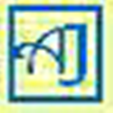Chemistry questions with solutions (MCQ) helpful for preparation of NEET, AIPMT, IITJEE, KIITEE, VITEEE, WBJEE, COMEDK and all other medical and engineering entrance exams.
Chemistry Test Series Questions: Hydrogen and its Compounds (Syllabus)
Position of hydrogen in the periodic table; Discovery, Occurrence, Preparation, Properties and Industrial Applications of Hydrogen; Dihydrogen - Isotopes of hydrogen, Properties, Preparation and Uses of dihydrogen; Heavy Hydrogen or Deuterium; Tritium; Hydrides and their classification; Water - structure of water and ice, properties of water, hard and soft water, Hydrogen Peroxide; Heavy water.
Chemistry Practice Questions: Hydrogen & its Compounds
Multiple Choice Questions (MCQs) – Set 1 (Q. No. (1-10)
Question 1: Hydrogen is prepared from H2O by adding –
a. Ca, which act as reducing agent
b. Al, which acts as oxidising agent
c. Ag, which acts as reducing agent
d. Au, which acts as oxidising agent
Question 2: The ionisation energy of hydrogen is –
a. Greater than inert gases
b. Nearer to inert gases
c. Nearer to halogens
d. Nearer to alkaline earth metals
Question 3: Hydrogen gas will not reduce:
a. Heated cupric oxide
b. Heated ferric oxide
c. Heated stannic oxide
d. Heated aluminium oxide
Question 4: Which one of the following reactions does not form gaseous product?
a. PbO2 + H2O2 →
b. PbS + H2O2 →
c. Cl2 + H2O2 →
d. Na2CO3 + H2O2 →
Question 5: Hydrogen is –
a. Electropositive
b. Electronegative
c. Both electropositive as well as electronegative
d. Neither electropositive nor electronegative
Question 6: Solid H2O2 has non planar and non-linear structure based on –
a. Dipole moment
b. X-ray study
c. Both a & b
d. Chemical method
Question 7: Hydride of certain non-metallic element ‘X’ is amphoteric in nature. The hydride of ‘X’ also reacts with calcium hydride (hydrolith) to liberate dihydrogen gas. The element ‘X’ is:
a. Nitrogen
b. Carbon
c. Oxygen
d. Sulphur
Question 8: H2O2 → H2O + O2
This represents –
a. Oxidation of H2O2
b. Reduction of H2O2
c. Disproportionation of H2O2
d. Acidic nature of H2O2
Question 9: Which of the following hydrides are generally non-stoichiometric in in nature?
a. Ionic hydride
b. Molecular hydrides
c. Interstitial hydride
d. Covalent hydrides
Question 10: The number of possible hydrogen molecules formed from its isotopes is –
a. 3
b. 6
c. 9
d. 12
hydrogen and its compounds
Solutions of Chemistry Test Series (MCQ) – Set 1 (Q. No. 1 – 10)
Answer 1: (a). Answer 2: (c). Answer 3: (d).
Answer 4: (b) Hint: PbS + 4H2O2 → PbSO4 + 4H2O2
Answer 5: (c) Hint: In electronegativity of hydrogen is in between metals and non-metals so it behaves as both electropositive and electronegative. It can lose electrons to form H+ ion and it can also gain electron to from H- ion.
Answer 6: (c).
Answer 7: (c) Hint: ‘X’ is oxygen. H2O is amphoteric. CaH2 + 2H2O → Ca(OH)2 + 2H2
Answer 8: (c).
Answer 9: (c) Hint: Interstitial hydrides are non-stoichiometric hydrides and thus deficient in hydrogen. Transition and inner transition elements at elevated temperature absorb hydrogen into the interstices of their lattices to yield metal like hydrides.
Answer 10: (b).
HYDROGEN AND ITS COMPOUNDS - More Objective Questions with Answers
<<Prev (Q.No. 11-20) Next>>
Recent Posts
- Free Online Practice Questions with Solutions for NEET, AIPMT, Medical Entrance Exams and MBBS Admission Tests: Diversity in The Living World, Biological Classification
- Animal Kingdom - Classification of Animals: Biology Questions and Answers for all Medical and Dental Entrance Exams, MBBS Admission Tests and other Competitions
- Free Online Preparation - Plant Kingdom and Classification of Plants: Biology MCQs for AIPMT and other Medical Entrance Exams, MBBS Admission Tests
- Human Reproduction, Reproductive Health - Biology Online Test Series for AIPMT, NEET, WBJEE, AFMC, OJEE, EAMCET, JIPMER, KIITJEE, COMEDK, BHU PMT, MBBS Entrance Tests
- States of Matter - Chemistry Online Test Series for IITJEE, COMEDK, WB Joint Entrance, VIT, EAMCET, AIPMT, NEET, AIEEE, BITSAT, AFMC, OJEE, Bihar PMT, KIIT, BHU PMT
- Structure of Atoms: Chemistry MCQ practice questions with solutions for MBBS Admission Tests, Engineering Entrance Exams, IITJEE, NEET, NAT, IIST (ISAT) and other competitive examinations
- Classification of Elements, Periodic Table, Periodicity in Properties - MCQ Test Series for all Medical, Engineering Entrance Exams and Admission Tests
- Projectile Motion - Physics Online Test Series for AIPMT, NEET, IITJEE, AIEEE, WBJEE, NAT, BITSAT, AFMC, OJEE, Bihar PMT, KIITEE, COMEDK, VITEEE, UPCAT, EAMCET, JIPMER, BHU PMT
- Circular and Rotational Motions: Physics Practice Questions and MCQ Test Series for IITJEE, AIPMT, AIEEE, WBJEE, NAT, BITSAT, AFMC, KEAM, OJEE, Bihar PMT, KIITEE, COMEDK, UPCAT, JIPMER, BHU PMT and Joint Entrance Exams
- NEET, IITJEE, AIPMT, VITEEE, Engineering and Medical Entrance Tests Practice Questions on Newton’s Laws of Motion and Friction










0 on: "Hydrogen and its Compounds: Chemistry questions with solutions for IITJEE, NEET, AIPMT, KIITEE, VITEEE, WBJEE "